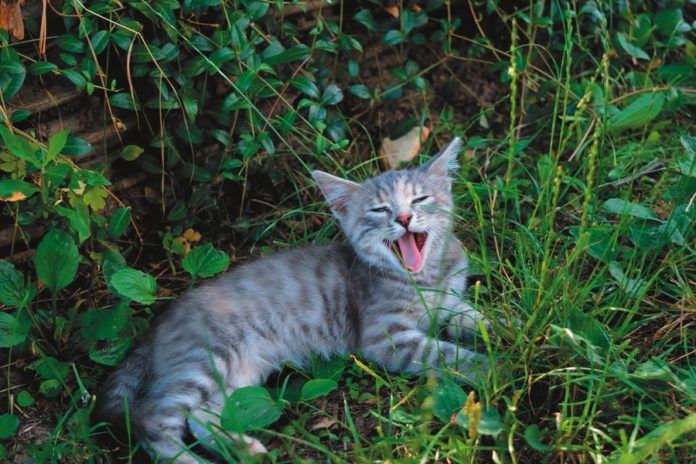© Jeneboston | Bigstock

Cats don’t get cavities. Their teeth don’t touch each other in a way that lets cavity-causing bacteria collect between them, and they don’t have little pits and fissures in their teeth, like people do, to serve as natural places for cavities to form. The pH of their saliva also stops cavity formation.
Still, you might hear some veterinarians talk about cat cavities. What do they mean, exactly?
They are referring to a phenomenon where a cat’s body starts to eat away one or more of its own teeth. It’s a fairly common problem — not just in house cats but also in lions, tigers, and other big cats. Called tooth resorption, it can happen to one tooth, or many, or all, and it can happen at any age. The younger it starts in your cat, the more likely that he will have lost all his teeth by age 10 or 11.
Why this happens, nobody knows. We just know there are cells that build up tooth material and cells that break it down, and sometimes the balance between the two becomes disturbed. The resorption starts right at the gum line, where the white enamel hits the pink gum. What begins as a little indentation keeps getting bigger and deeper, with the hidden part of the tooth underneath the gum line resorbing at the same rate as what’s visible. Finally, the tooth crumbles and breaks off, and the gum heals over it.
The good news: even if a cat loses all of his teeth this way, he doesn’t need to make any lifestyle adjustments — as long as he lives indoors and doesn’t need teeth to protect himself. Many cats don’t even have to be switched from dry food to wet; cats don’t really chew, anyway.
So why would it ever be a problem?
Toothache
While a cat will feel fine after a tooth resorbs, the process of resorption can prove very painful. A tooth’s enamel covers its dentin, which contains tiny tubules, or channels, that are almost the equivalent of nerves. That’s where all the sensitivity to heat, cold, and pressure is. If the dentin is exposed as the enamel wears away, the tooth becomes much more sensitive. Waiting for a tooth to fully resorb — a process that could take weeks to months — might leave a cat in pain for quite a while. That’s why the gold standard treatment for a resorbing tooth is to extract it. It will cost you; there’s the price of the anesthesia as well as the dental work itself. But your cat will be so much more comfortable because you stepped in.




